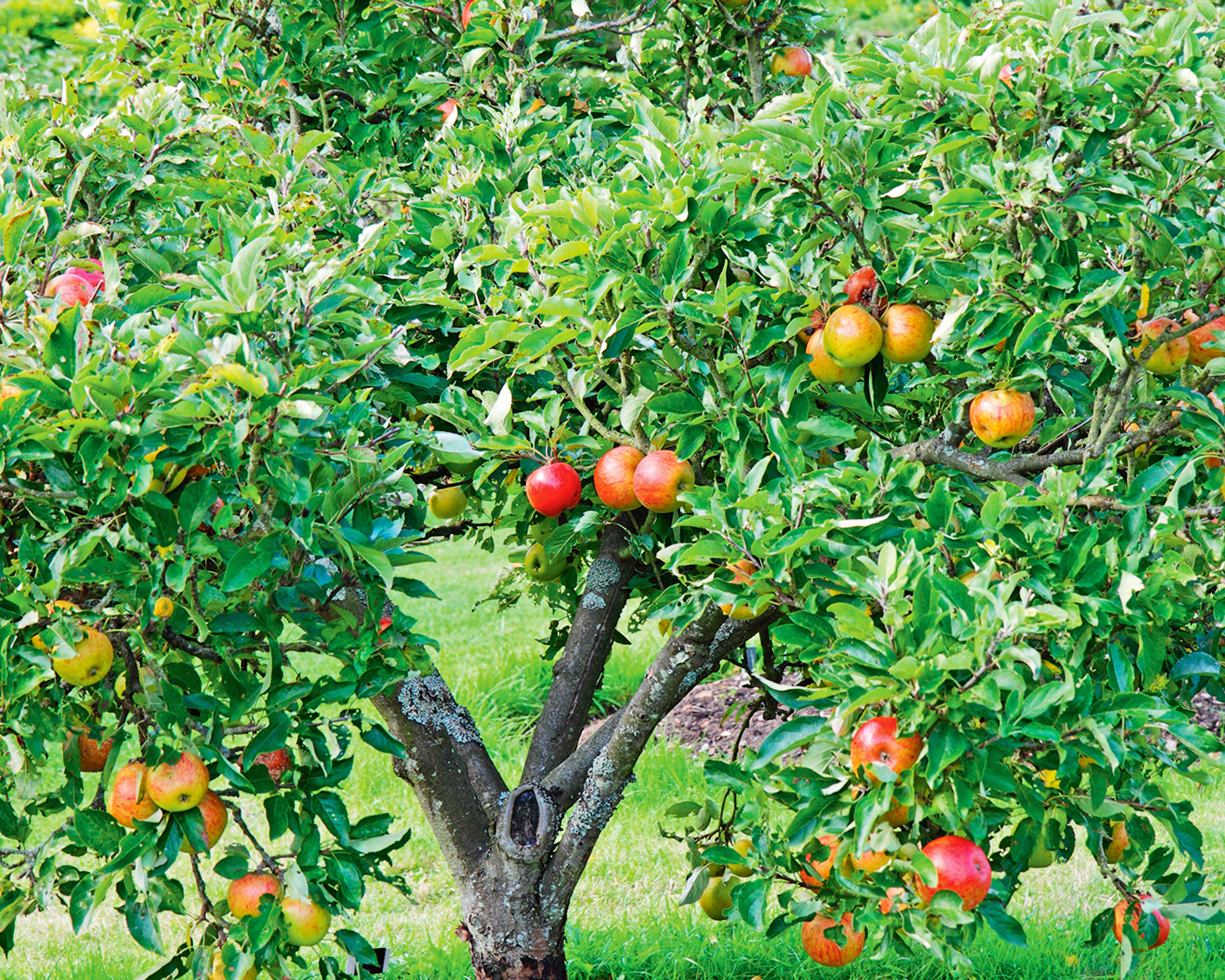7 Best Fruit Trees For Front Yards – The Delicious Way To Boost Curb Appeal
Discover the best front yard fruit trees to provide a perfect focal point, beautiful seasonal flowers, and something delicious for your table.


Growing front yard fruit trees is a great way to boost curb appeal and provide an inviting feature to come home to each day. However, while there are many trees that will add value to your home, not all species make desirable additions to front yards. There are even trees that will devalue your home.
A standard fruit tree can reach 25 feet (7.6m) in height when mature. If it is situated in the front yard, that presents issues, including blocking views, creating fruit litter, and shading out other plants. Most importantly, a giant tree in the yard will dwarf the home and detract from its curb appeal.
So the best fruit trees for front yards are small enough to harvest effectively and diminish debris, will not block the sun, and will accent the garden display rather than take it over. Selecting the best fruit will also depend upon your USDA hardiness zone, the lighting exposure, soil, and other factors.
Here we reveal some of the best front yard fruit trees. However, there are many more amazing releases from fruit tree breeders. Depending on your zone you could also grow a jujube, persimmon, or even a citrus tree.
1. Apple Tree

With many varieties from which to choose and an average USDA hardiness of 3-8, apple trees are an excellent choice.
They can be dwarf or semi-dwarf and may be trained to an espalier or cordon. There are also columnar varieties that get no taller than 12-15 feet (3.7-4.6m).
Their spring blooms are an excellent pollinator attractant and bring beauty to the yard. Following the flowers, small fruits begin to form in hues of green, gold, or red depending on the variety.
Sign up for the Gardening Know How newsletter today and receive a free copy of our e-book "How to Grow Delicious Tomatoes".
Fertilize apple trees in fall once the leaves have dropped and apply a dormant spray in spring to protect the plant from insect pests. Keep apple trees moderately moist.
2. Plum Tree

Plum trees are naturally small fruit plants. When mature, some varieties can get up to 16 feet (5m) but this can be controlled with pruning. Select a variety that is self-fruitful, meaning it doesn’t need a pollinating partner.
Most plums are hardy to USDA zones 4-9. Plums need regular watering, about 1 inch (2.5cm) per week.
Prune plum trees annually when they are leafless. They are mostly low-maintenance trees with beautiful spring blooms and colorful fruit.
3. Cherry Tree

Many cherry trees can get quite huge but there are many different types to choose from, including dwarf trees.
For variety, try the Combination Dwarf Cherry. It sports four varieties of the fruit off its grafted rootstock. The tree only gets 10 feet (3m) high when mature and bears early and late season fruits of red and yellow. It is self-fruitful and hardy to USDA zone 5.
Water cherry trees deeply every one to two weeks once established. The only pruning necessary is to remove dead or damaged plant matter.
4. Fig Tree

Fig trees can grow up to 15 feet (4.6m) tall, but can be controlled with pruning. The Compact fig only gets 3 feet (90cm) tall. They tend to get as wide as they are tall and have a bushy habit.
Figs will produce fruit 3-5 years after planting. Most varieties are hardy to USDA 8-10 but a few have been developed that are hardy to USDA 5-7.
Prune fig trees when they are dormant in winter to keep them open and remove dead material. Keep the soil moderately moist and feed the tree in early spring with low-nitrogen food.
5. Pear Tree

Dwarf pear trees will get around 8 feet (2.4m) tall. Dwarf Comice and Bartlett trees are readily available and self-fruitful. There are many other dwarf pears but not all are self-fruitful and will require two trees to produce fruit.
Prune pear trees to a central leader when they are young. Water once or twice a week, or just enough to keep the soil cool and modestly damp.
Most pears prefer USDA zone 5 but a few varieties can grow into zone 3.
6. Crabapple Tree

Crabapple trees are quite ornamental and produce lovely, red, tart fruits. Many dwarf varieties have a beautiful weeping form and the soft pastel flowers delight in spring.
During establishment, the trees should be watered once or twice weekly. Thereafter they can go long periods without extra water except in the hottest weather.
These plants are hardy to USDA zones 4-9 and reach 8 feet (2.4m) tall and 5 feet (1.5m) wide. Crabapples have the ability to pollinate apple varieties that need a pollination partner.
7. Banana Tree

The idea of having a tropical plant in the garden appeals to many gardeners. Dwarf banana trees may be as small as 2 feet (60cm) with a spread of 1 foot (35cm).
They are only hardy to USDA zones 8-11 but thrive in a container, enabling trees to be overwintered indoors.
Prune the plant in spring or summer to encourage flowering and fruiting. Water the tree a few times a week and apply slow-release fertilizer twice a year.

Melanie is an experienced gardener and has worked in homes and gardens media for over 20 years. She previously served as Editor on Period Living magazine, and worked for Homes & Gardens, Gardening Etc, Real Homes, and Homebuilding & Renovating. Melanie has spent the last few years transforming her own garden, which is constantly evolving as a work in progress. She is also a passionate organic home grower, having experimented with almost every type of vegetable at some point. In her home, Melanie tends to an extensive houseplant collection and is particularly fond of orchids.